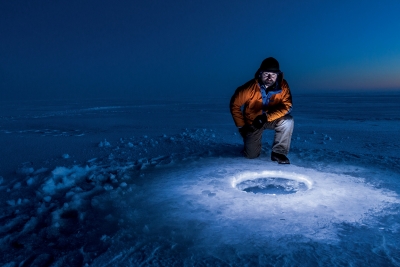
The violent snail Janthina janthina floats on the water surface by means of a bubble raft made by its mobile foot, which scoops up bubbles of air and, after enveloping them in mucus, adds them to its raft. The snails travel wherever the waters and winds take them.
It secrets mucus from its foot which binds bubbles together in a raft, on which it floats freely on the ocean, in equatorial and temperate waters. Its shell is 3-4 cm in size, light and fragile, and is a dark purple at the widest part, fading to a light purple at the narrow top. Its body ranges from dark purple to black.
Violet snails are protandric hermaphrodites, meaning they are born male and develop into females over time. Fertilization is internal, but males lack a penis, so there is no direct mating. Instead, the males release their sperm into a case that drifts to a female, where the sperm fertilizes the eggs. The eggs develop internally and are born live, with the tiny purple snails immediately able to build their own rafts. They use their feet to agitate the water, creating bubbles, which they bind together with mucus. If the bubble raft ever breaks apart, the snail will sink into the ocean and die.
Violet snails are preyed upon by fish, birds, sea turtles, other molluscs and nudibranchs. The snails sometimes have pelagic barnacles attached to their shell as hitchhikers.
Picture Credit : Google














